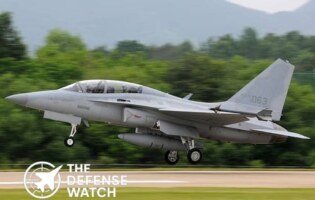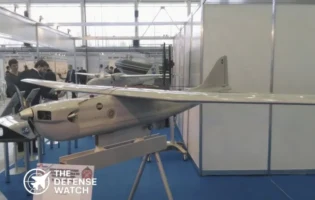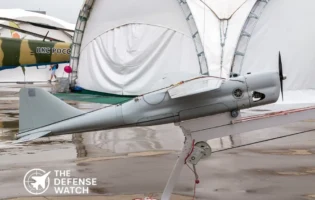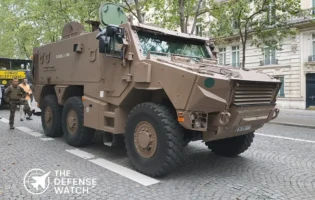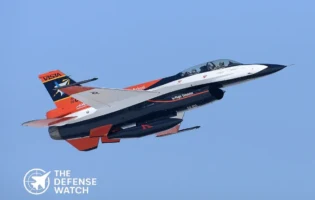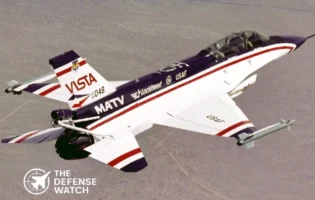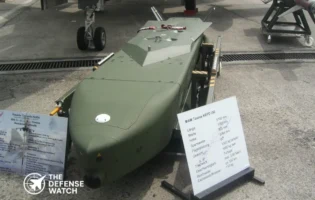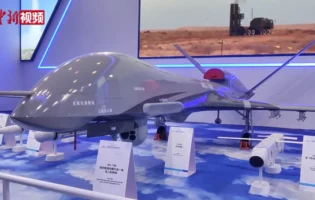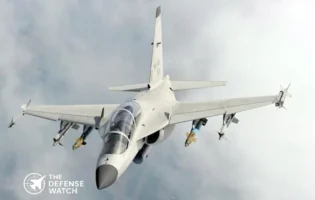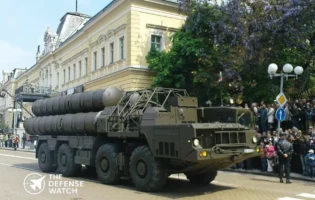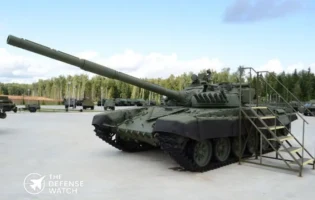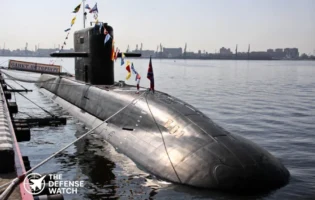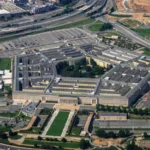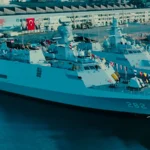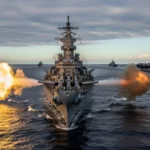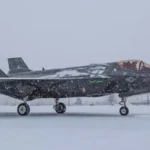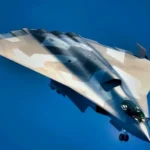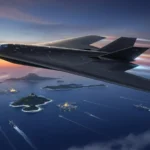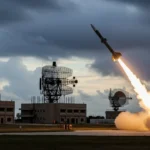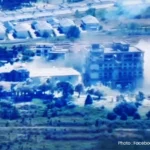- Home
- Catalog
- Fighter Jets
- KF-21 Boramae Fighter Jet
KF-21 Boramae Fighter Jet
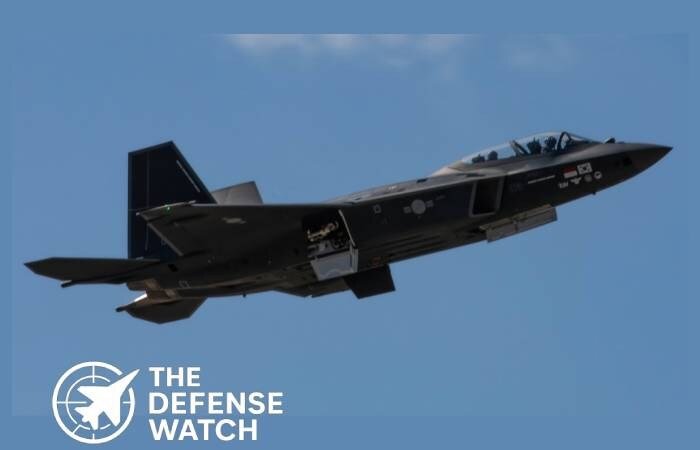

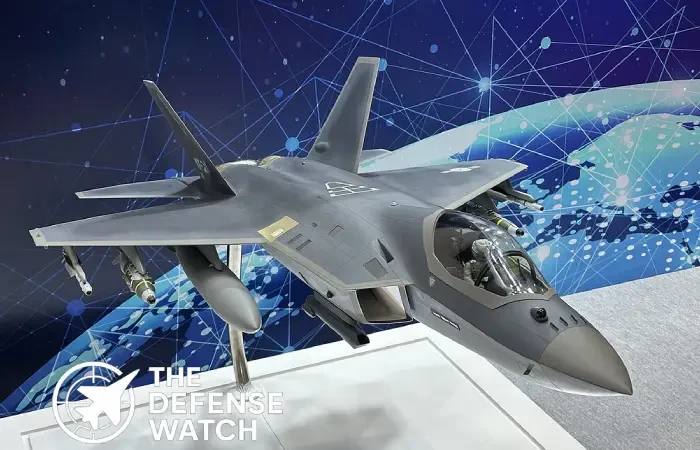
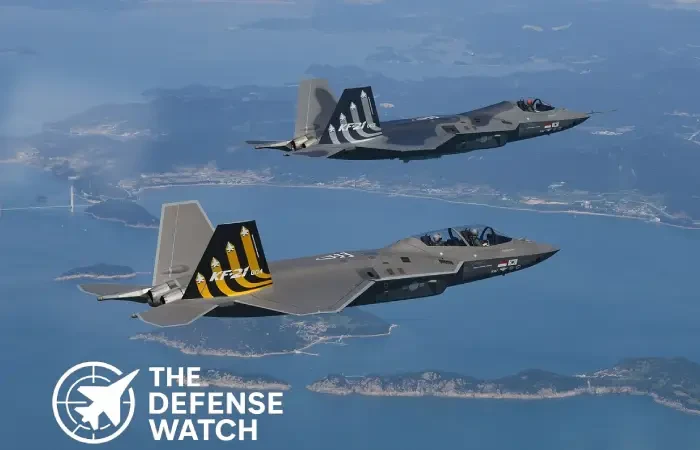
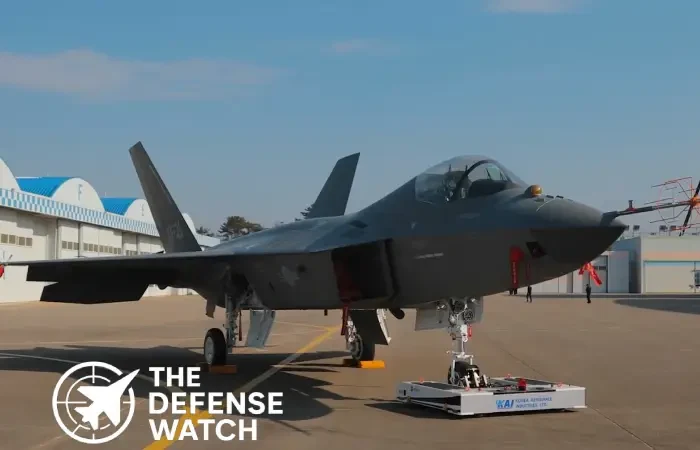
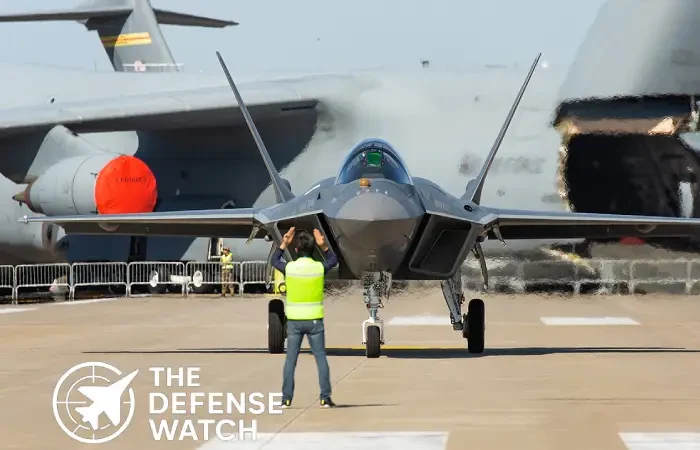

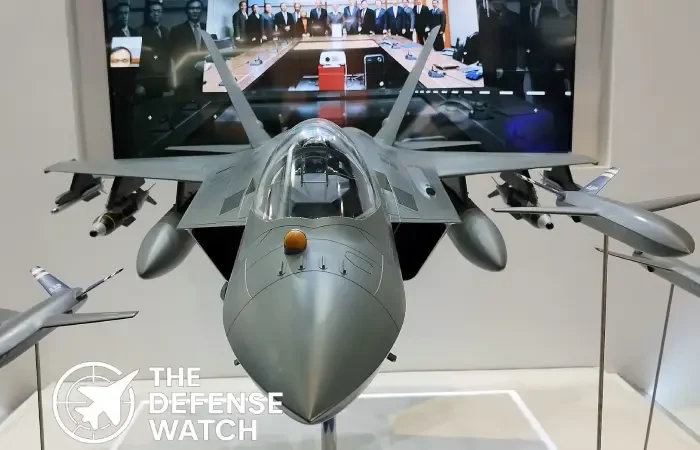
Full Specifications
General Information
| Name | KF-21 Boramae |
| Manufacturer | Korea Aerospace Industries (KAI) |
| Country of Origin | South Korea |
| Type / Role | Multirole fighter |
| Generation | 4.5 (evolving to 5th-gen) |
| Status | In serial production (since 2024) |
| First Flight | 19 July 2022 |
| Introduction / In Service Since | Planned 2026 |
| Number Built | 6 prototypes; 40+ on order |
| Operators | ROKAF (planned); Indonesia (planned) |
Dimensions & Structure
| Length | 16.9 m (55 ft 5 in) |
| Wingspan | 11.2 m (36 ft 9 in) |
| Height | 4.7 m (15 ft 5 in) |
| Wing Area | 46.5 m² (500 sq ft) |
| Empty Weight | 11,800 kg (26,000 lb) |
| Maximum Takeoff Weight (MTOW) | 25,600 kg (56,400 lb) |
| Internal Weapons Bay | Planned (Block III) |
| External Hardpoints | 10 |
Performance
| Maximum Speed | Mach 1.81 (2,200 km/h) |
| Range | 2,900 km (ferry) |
| Combat Radius | ~1,000 km |
| Service Ceiling | 16,764 m (55,000 ft) |
| Rate of Climb | 304 m/s (60,000 ft/min) |
| Thrust-to-Weight Ratio | 0.76 |
| G Limits | +9 / -3.6 |
Powerplant
| Engine Type | General Electric F414-GE-400K turbofan |
| No. of Engines | 2 |
| Thrust (each) | 97.9 kN (22,000 lbf) with afterburner |
| Thrust Vectoring | No |
| Fuel Capacity | 5,400-6,000 kg internal |
Armament
| Gun | 20 mm cannon |
| Missiles (Air-to-Air) | Meteor, IRIS-T, AIM-120 (planned) |
| Missiles (Air-to-Ground) | AGM-84 Harpoon, various (planned) |
| Bombs | JDAM, precision-guided munitions |
| Hardpoints | 10 |
| Payload Capacity | 7,700 kg (17,000 lb) |
Avionics & Systems
| Radar | Hanwha Systems APY-016K AESA |
| Radar Range | 150-200 km |
| Electronic Warfare (EW) System | LIG Nex1 integrated suite |
| Targeting System | Hanwha EO TGP |
| Helmet Display | Integrated HMD |
| Navigation | INS/GPS with terrain-following |
| Autopilot / AI Assistance | AI mission computer (planned Block III) |
| Communication | Secure data link for network-centric ops |
Stealth & Technology
| Radar Cross Section (RCS) | ~1 m² (semi-stealth) |
| Stealth Features | RAM, partially recessed weapons |
| Infrared Signature Reduction | Engine exhaust shaping |
| Sensor Fusion | Integrated multi-sensor processing |
| Networking Capabilities | Data link for coalition interoperability |
Variants
| Special Export Versions | Customized avionics and weapons fit |
Operational History
| Major Conflicts / Deployments | None (testing phase) |
| Notable Operators | South Korea |
| Combat Proven? | No |
| Mission Types | Air defense, strike, multirole |
Cost & Program
| Unit Cost | $65–70 million (estimated) |
| Development Cost | ~$8 billion |
| Program Name | KF-X Program |
| Funding Countries | South Korea, Indonesia |
Additional Information
| Upgrades Planned | Thrust vectoring, internal bay (Block II/III) |
| Future Replacement | F-4E/F-5 fleet |
| Export Restrictions | Subject to U.S. tech export controls |
| Notable Achievements | South Korea’s first indigenous fighter |
| Competitors | Gripen E, Rafale, F-16V |
PROS
- Modern AESA radar and advanced EW suite
- Multirole flexibility for diverse missions
- Lower operational costs than F-35
- Modular design for upgrades and export variants
- Domestic and allied technology cooperation
CONS
- Partial stealth capability only
- Limited combat record (new platform)
- Dependent on imported F414 engines
- Development delays due to cost-sharing disputes
- Export market competition from Gripen and Rafale
KF-21 Boramae: South Korea’s 4.5-Generation Multirole Fighter
In an era where aerial dominance hinges on agility, stealth, and networked precision, the KF-21 Boramae Fighter Jet emerges as a pivotal advancement in multirole fighter technology. Developed by Korea Aerospace Industries (KAI) under the KF-X program, this 4.5-generation aircraft—named after a hawk-like bird of prey—represents South Korea’s push toward indigenous defense capabilities, reducing reliance on foreign imports while enhancing regional security partnerships.
Originating from a 2010 collaboration between South Korea and Indonesia, the KF-21 addresses the Republic of Korea Air Force’s (ROKAF) need to phase out aging F-4 Phantoms and F-5 Tigers. Its primary role spans air superiority, ground attack, and reconnaissance, with modular blocks allowing evolution into a full 5th-generation platform. Block I focuses on intercept missions, while Blocks II and III incorporate strike and stealth enhancements, including internal weapons bays.
Key capabilities shine through its performance envelope: a maximum speed of Mach 1.81 (2,200 km/h) enables supercruise for fuel-efficient pursuits, backed by a 2,900 km ferry range and approximately 1,000 km combat radius. Powered by twin General Electric F414 turbofans, it delivers 195.8 kN of thrust for a thrust-to-weight ratio near 0.76, supporting +9g maneuvers. Armament includes a 20mm cannon, up to 10 external hardpoints for 7,700 kg payload, and compatibility with MBDA Meteor air-to-air missiles, IRIS-T short-range interceptors, and precision-guided bombs like JDAMs.
Technologically, the Hanwha Systems APY-016K AESA radar offers 150-200 km detection, tracking 20 targets simultaneously, augmented by an integrated LIG Nex1 electronic warfare suite and Leonardo IRST for passive targeting. Semi-stealth features reduce radar cross-section to about 1 m² via radar-absorbent materials and weapon shaping, with infrared suppression minimizing detection. Sensor fusion and secure data links enable network-centric operations, vital for U.S.-led coalitions in the Indo-Pacific.
Operational testing since its 2022 maiden flight has validated supersonic dashes, night refueling, and live-fire integrations, with serial production underway for 2026 ROKAF entry. For U.S. audiences eyeing allied interoperability, the KF-21’s F-414 engines and NATO-standard weapons ensure seamless integration, positioning it as a cost-effective bridge to 5th-gen fighters like the F-35.
Variants
| Field | Example |
|---|---|
| Block I | Air superiority (ROKAF initial) |
| Block II | Multirole strike (enhanced A2G) |
| Block III | Stealth multirole (internal bays) |
| KF-21EX | Export stealth variant |
Reviews
Disclaimer Note
The information provided on TheDefenseWatch.com is for general informational purposes only. While we strive to ensure the accuracy, completeness, and timeliness of our content regarding defense and aerospace products, technologies, and specifications, we cannot guarantee that all information is 100% accurate or up-to-date due to the evolving nature of military technology and classified data. TheDefenseWatch.com does not warrant the reliability, suitability, or availability of the information for any specific purpose. Users are advised to consult official sources, such as manufacturers, government publications, or defense agencies, for precise and verified data before making decisions based on our content. We are not affiliated with any defense manufacturers, governments, or military organizations mentioned. Opinions, reviews, and ratings reflect expert analysis but are subjective and should not be considered endorsements. TheDefenseWatch.com is not responsible for any errors, omissions, or consequences arising from the use of this website’s content. External links are provided for convenience and do not imply endorsement. TheDefenseWatch.com reserves the right to update or modify content without prior notice. By using this website, you agree to our Privacy & Cookies Policy.


